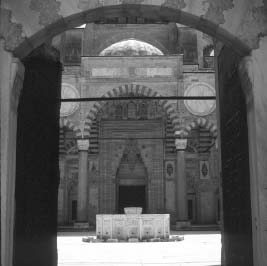IslamCustoms and Rituals |
Do Muslims ever visit their holy cities outside of the formal pilgrimage season? |
Hajj, or major pilgrimage, fulfills a religious duty only in connection with the formal season. But travelers to the holy city can perform the Umra or lesser pilgrimage any time of year. Umra is a strictly devotional activity, optional but highly recommended. Rituals include a much scaled-down version of important Hajj activities. To be more precise, Umra is actually a component of Hajjthat can be performed separately. Pilgrims enter into the state of ritual consecration by donning the same seamless white cloth worn for Hajj before entering the sacred zone surrounding Mecca. They proceed to the Ka’ba, circumambulate it seven times, perform two cycles of ritual prayer, take a drink from the well of Zamzam, and walk rapidly seven times between the small hillocks called Marwa and Safa. They conclude the lesser pilgrimage by clipping a lock of hair or shaving the head, symbolizing the spiritual change desired as a result of the pilgrimage. As at Hajj time, many pilgrims add a visit to the Prophet’s Mosque in Medina, but that is a separate devotional activity.

Ablution taps used for ritual cleansing. Edirne, Turkey.
